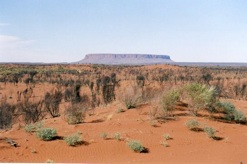Steven Reed Johnson
Portland, Oregon USA

My Place on Earth
Knowing Home












Knowing Home
To be rooted is perhaps the most important but least understood need of the human soul.
Simone Weil
The first order of bioregional business is to learn so much about your habitat that you can live within the seasons and its soil conditions, and with its other species--not in spite of them.
Hannah Homes
In a world without places, there is no responsibility for yesterday and tomorrow.
William Riley
We have made a tradition out of mourning the passing of things we never had time really to know, just as we have made a culture out of the open road, out of movement without place....Indifferent to, or contemptuous of, or afraid to commit ourselves to, our physical and social surroundings, always hopeful of something better, hooked on change, a lot of us have never stayed in one place long enough to learn it, or have learned it only to leave it....When we came to the new world we left history behind us...neither the country nor the society we built out of it can be healthy until we stop raiding and running, and learn to be quiet part of the time, and acquire the sense not of ownership but of belonging.
Wallace Stegner
The kind of "knowing" Wendell Berry is talking about comes from working in it all kinds of weather, making a living from it, suffering its catastrophes, loving its mornings or evenings, valuing it for the investment you and your ancestors have made in it.
"it must be true that people cannot claim genuine ownership of anything unless they are participants of its stories. My comfortable old easy chair is mine only because I can recall the children I have held in it, the books I have read, and the words and thoughts that have come as I sat in it. A car does not feel owned until adventures have been had in it. A house is not a home until it has accumulated a mythology of its own. Stories are a fabric into which we weave ourselves and the things that matter in our lives. They establish true ownership as sales slips and check stops cannot, and such ownership always turns out to be a mutual affair. We are owned by what is really ours as much as we own it. (1-8)
Joseph Meeker
The reconstruction of a people and of a life in the United States depends in part on people, neighborhood by neighborhood, county by county, deciding to stick it out and make it work where they are, rather than flee.
Gary Snyder
Sand Maps in the Australian Outback
Reconciling Story and Scientific Knowledge
I learned about sand maps when I was helping my friend Anton distribute digital cameras to remote Aboriginal communities in the Australian outback. We were distributing the cameras so that Aboriginals could use the Internet to find family members separated by colonial policies in the 19th and early 20th century.
In Alice Springs we met up with a group of idealistic young geographers and planners who worked under contract with the federal government to help aboriginal communities inventory their land holdings, substantially increased under the Land rights Act. Some Aboriginal groups had been victims of speculators and developers. The hope was that the specialists, equipped with new technologies like GIS and Auto Cad, and mountains of geographic data, could help the aboriginals determine the extent and value of their resources.
They put together data and maps and journeyed out to a remote Aboriginal community. They were discombobulated by the community elders who, after a quiet examination of their maps, began to make corrections and add “data.” They corrected features such as the extent of floodplains.
The team was astounded upon return to their research facilities, to find that their data was wrong, and the Elder's was correct. The Elder’s knowledge, for example, about floodplains, was based on generations of knowledge, while the scientific data had a much shorter shelf life. In areas where some plants, because of shortage of rain, might only emerge every few years, having long term experiential knowledge is critical.
They returned to the village, apologetically. Hoping to make amends they asked what they could do that might allow them to integrate the Aboriginal data and their “scientific” data. Without much explanation, the elders instructed other residents, in particular young people, to collect a cacophony of objects and distribute the items in an acre or so plot in front of the community center building. There were old tires, road signs, rocks, boards, boxes, rope and string, and branches and plants strewn over the plot of land. The process took several weeks. At the end, they simply announced, “Now we have a sand map.” They explained that the acre was a representation of their land, and in the found objects were map legend symbols. At one point one of the teenagers declared to their elders, “Why didn’t you tell us about all this before?” In effect, the map making exercise had become an interactive story telling tool, allowing the elders to pass on knowledge to the next generation. The experts were then able to go back to their computer lab and reconstruct maps that integrated the Aboriginal experiential knowledge and scientific data.

